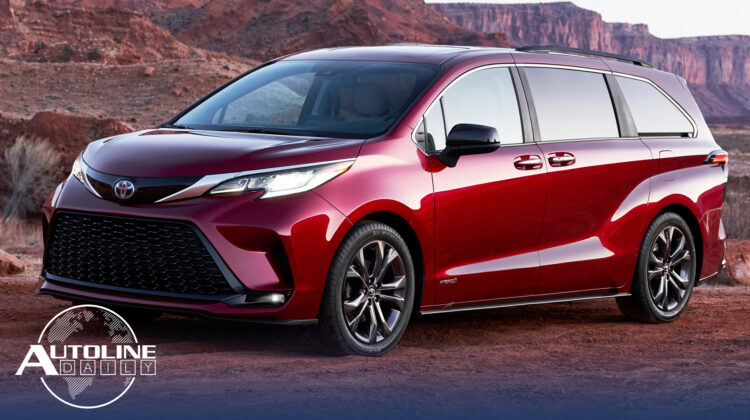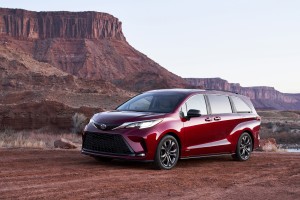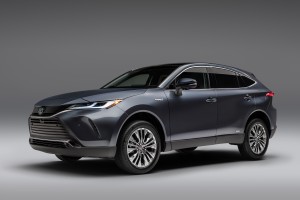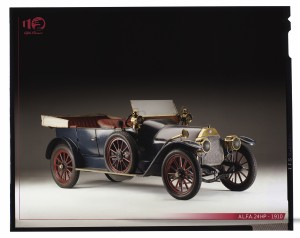
Listen to “AD #2840 – Incentives Still Drive EV Growth; Toyota Reveals New Sienna and Venza; More Suppliers Will Go Bankrupt” on Spreaker.
Follow us on social media:
Runtime: 10:42
0:07 Incentives Still Drive EV Growth
1:20 Mid-Size Truck Sales Forecast to Pick Up
1:59 Skoda Offers Foldable Scooter
2:31 Toyota Reveals All-New Sienna Minivan
4:05 Toyota Brings the Venza Back
5:25 Subaru Posts Profit for the Fiscal Year
6:17 Subaru Has An Aerospace Division?
7:46 Why More Suppliers Will Go Bankrupt
9:52 Alfa Romeo Web Series Celebrates Its History
Visit our sponsor to thank them for their support of Autoline Daily: Bridgestone.
This is Autoline Daily, the show dedicated to enthusiasts of the global automotive industry.
INCENTIVES WILL STILL DRIVE EV GROWTH
The coronavirus is going to have an impact on global sales of electric vehicles. According to a new report from BloombergNEF, countries that are incentivizing electric vehicle sales will see big growth. In China, the EV market is expected to grow to 8% of all sales by 2021 and in Europe, EVs will rise to 5% of sales. However, in the U.S., where there’s weaker support, EVs will drop to 1.7% of the market in 2021. Combustion engine vehicles will command over 50% of the market for many years but they’ve already hit their peak. Globally, automakers won’t sell more ICE vehicles than they did in 2017. By 2025, 1 out of every 10 vehicles sold globally will be electric. The report also said that the overall market will feel the effects of the pandemic for a long time to come. It predicts that auto sales won’t recover for another five years and there will be a drop in total miles driven through 2023.
MID-SIZE TRUCK SALES FORECAST TO PICK UP
And speaking of sales, full-size pickup trucks have been among the best-selling vehicles during the pandemic in the U.S. market. But now JD Power reports that mid-size trucks are outperforming big trucks. The smaller pickups were 3% ahead of the pre-virus forecast, for the week ending May 10, compared to large trucks which were down 1%. For the month of May, JD Power is forecasting overall U.S. sales to decline between 16 and 26 percent based on pre-virus forecasts. But it says sales will get a boost at the end of the month thanks to Memorial Day incentives.
SKODA OFFERS FOLDABLE SCOOTER
We’re seeing more automakers invest in last mile solutions and micromobility and now Skoda, which is part of the VW Group, is offering a foldable scooter. It fits into the spare tire well in the Kamiq and Scala models and weighs less than 5 kilograms or 11 pounds but can carry over 100 kilograms or 220 pounds. The scooter is available now and costs about $120.
TOYOTA REVEALS ALL-NEW SIENNA MINIVAN
Toyota has a couple of big reveals. And we’ll start with the all-new Sienna minivan, which now only comes as a hybrid. Styling is more expressive than the outgoing model with a character line that kicks up over the rear wheel well, which helps make the back end look less bulky, and a rear styling element below the taillights that mimics the Supra. The lower section of the front end is similar to the old van but the grille and headlights have been thinned out. The dashboard is layered with a 9-inch upright touchscreen in its center and a so-called “Bridge Console” spans the two front seats, which incorporates the arm rests and has a good amount of storage below it. But as we know, minivans are not all about the driver. Rear passengers will have access to a vacuum cleaner and refrigerator as well as Super Long Slide second row captain’s chairs that can even come with their own ottoman. Powering the new Sienna is a 2.5L 4-cylinder engine mated to two electric motors, which combines for a total output of 243 horsepower. Toyota is estimating combined fuel economy at 33 MPG. All-wheel drive will also be available, but rather than using a transfer case to send power to the rear wheels, Toyota has incorporated an independent electric motor at the rear. Those are the highlights, but if you’d like to learn more we’ll provide a link in the transcript or description box below.
TOYOTA BRINGS THE VENZA BACK
Next up, Toyota brought the Venza back. This may look familiar to some of you because it’s based on the Harrier, which is sold in Japan and we highlighted back in April. Interestingly, the Lexus RX used to be based on the Harrier as well and you can see a little influence in the grille, which has a spindle shape. The Venza is powered by the same hybrid setup as the Sienna; a 2.5L engine mated to two electric motors up front but it also comes standard with all-wheel drive so it gets the third motor in the rear as well. The interior is highlighted by a floating 12.3-inch display screen, which has two polished metal pieces that extend down and anchor it to the center console. The SUV will also get a neat feature we’ve seen on vehicles from Mercedes, self-tinting roof panels. The technology uses electricity to change the opacity of the windows at the touch of a button.
SUBARU POSTS PROFIT FOR THE FISCAL YEAR
And now for something completely different. At a time when all automakers are reporting a big drop in revenue and profit, Subaru posted earnings that are going in the other direction. It’s revenue was up 6% to about $31 billion. It had an operating profit of nearly $2 billion, up a significant 16%, and it generated a net profit of about $1.4 billion, up a solid 8%. Of course, these numbers are for Subaru’s latest fiscal year, which, like most Japanese companies, runs from the beginning of March to the end of April, instead of from the beginning of January to the end of December like most Western companies. I don’t know how Japanese companies ended up on a March fiscal, but maybe one of you, our viewers, knows the answer.
DID YOU KNOW SUBARU HAS AN AEROSPACE DIVISION
And now let’s look at some of Subaru’s newest models that you probably have not seen. That’s because they come from Subaru’s aerospace division. Most people are not even aware that Subaru is involved in aerospace. It recently developed and is manufacturing a new helicopter with Bell, and has actually been working with Bell since the 1960’s. It manufactures sections of the Boeing 767, 777, 787 and 777X. And it’s developing its own unmanned autonomous passenger drone. So how did Subaru end up in aerospace? At the end of World War II the United States banned Japan from building any aircraft. So frustrated airplane engineers ended up going into the auto industry instead. Nissan got involved in aerospace though Carlos Ghosn sold off that operation. Mitsubishi makes commercial passenger jets, and this infatuation with flying machines is a key reason why Honda recently started making private jets. So why are we reporting on all this? At Autoline we like showing you all aspects of the auto industry that you’re probably not going to get anywhere else.
WHY SOME SUPPLIERS WILL GO BANKRUPT
We’re probably going to see twice as many bankruptcies this year involving automotive suppliers compared to the Great Recession. That’s the prediction from Paul Eichenberg, who was our guest on Autoline After Hours last Thursday. And a key reason why they’re going to fail has to do with how the car companies pay their suppliers. Take a look.
Paul Eichenberg, Strategist
“And then, frankly what we’re in right now is a liquidity crisis that’s the result of the stop of production for two months, not only here in North America, but you’ve had that in Europe and in Asia. As a result, and if you just think about the North American supplier for instance, you’ve had 60 days of complete shutdown of the industry. And the interesting thing is when everybody starts up next Monday. The significance of that is the OEMs pay on 60-day terms. So basically what you had in the midst of this crisis is that everyone was still getting paid. What happens Monday, when the launches restart? Nobody has income for 60 days. And this is the issue that I think is really going to cascade through the supply base, not just here in North America, but is happening globally. And what you have, is this time frame between Europe and North America starting up again, as a result of this 60 day shutdown, and the question is: How do you bridge the gap from Monday to be able to start collecting receivables again from the OEMs? How you cover that gap is significant.”
Be sure to join us this Thursday for After Hours when our guest will be the always interesting and often controversial Ed Niedermeyer. So join me and Gary for some of the best insights into the automotive industry.
Before we go, we knew you’d be interested in this.
ALFA LAUNCHES WEB SERIES CELEBRATING 110 YEARS
Alfa Romeo is celebrating its 110th anniversary this year and as part of the festivities Alfa launched a new web series, called “Storie Alfa Romeo” that details its history. The episodes look at some of the unique stories and people that are a part of the brand and feature photos from its archives. There’s 4 episodes out right now, starting with its first vehicle, the 24 HP.
But that’s it for today, thanks for watching and please join us again tomorrow.
Thanks to our partner for embedding Autoline Daily on its website: WardsAuto.com

John McElroy is an influential thought leader in the automotive industry. He is a journalist, lecturer, commentator and entrepreneur. He created “Autoline Daily,” the first industry webcast of industry news and analysis.









